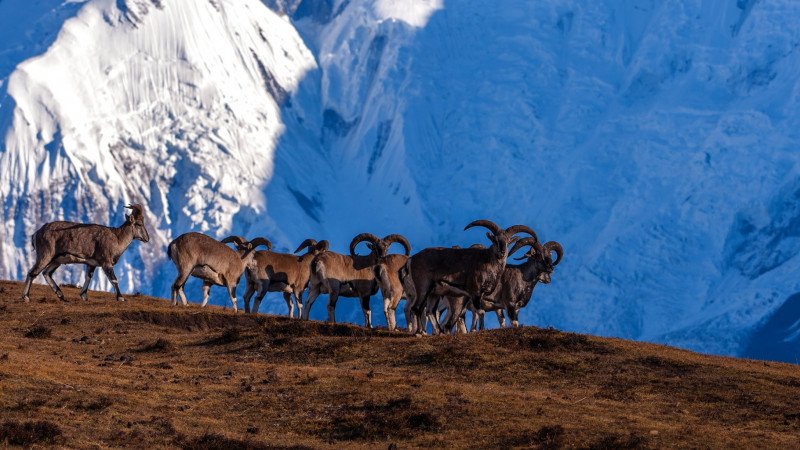Planning to trek in the majestic Annapurna region of Nepal? Then you’ll need the Annapurna Conservation Area Permit (ACAP). Whether you’re hiking to Annapurna Base Camp, Ghorepani Poon Hill, or Khopra Danda, this permit is your official access pass to one of Nepal’s most iconic trekking zones.
In this complete guide, we’ll explain what the Annapurna Conservation Area Permit is, who needs it, how much it costs, and exactly how to get it so you can focus more on your adventure and less on paperwork.

What is the Annapurna Conservation Area?
The Annapurna Conservation Area (ACA) is Nepal’s largest protected area, spanning over 7,600 square kilometers across the districts of Manang, Mustang, Myagdi, Lamjung, and Kaski. Home to legendary treks like:
Annapurna Circuit
Annapurna Base Camp
Mardi Himal Trek
Khopra Danda Trek
Ghorepani Poon Hill Trek
To preserve its rich biodiversity, culture, and environment, the Nepalese government mandates all trekkers to obtain the Annapurna Conservation Area Permit before entering.
Who Needs the Annapurna Conservation Area Permit?
If you’re a foreigner trekking in the Annapurna region, you need the Annapurna Conservation Area Permit. This includes:
Individual trekkers
Group trekkers
Trekkers with guides or porters
Trekkers going independently
Nepali citizens and SAARC nationals may receive discounted or free entry in some cases, but all others must obtain a permit.
Cost of the Annapurna Conservation Area Permit (2025 Rates)
Here are the official ACAP fees as of 2025:
| Category | Price (NPR) | Price (Approx USD) |
|---|---|---|
| Foreign Nationals | NPR 3,000 | ~USD 23 |
| SAARC Nationals | NPR 1,000 | ~USD 7.5 |
| Nepali Citizens | Free | – |
Note: These are one-time fees, regardless of how many days you plan to spend in the conservation area.
Where to Get the Annapurna Conservation Area Permit
You can obtain your Annapurna Conservation Area Permit from the following official offices:
1. Nepal Tourism Board Office, Kathmandu
Location: Pradarshani Marg, near Ratna Park
Hours: 10:00 AM – 5:00 PM (Sunday to Friday)
2. Nepal Tourism Board Office, Pokhara
Location: Damside, near Lakeside
Hours: 10:00 AM – 5:00 PM (Sunday to Friday)
3. ACAP Office, Besisahar (for Annapurna Circuit trekkers)
Good option if you’re starting from Lamjung
Tip: Get your permit in Kathmandu or Pokhara ahead of your trek to avoid delays.
Documents Required to Get the ACAP Permit
To get your Annapurna Conservation Area Permit, bring the following:
2 passport-size photos (most offices offer quick photo services if needed)
A photocopy of your passport
Completed ACAP form (available at the counter)
Permit fee (in Nepali Rupees)
Most permit offices accept cash only, so carry local currency.
How Long Does It Take to Get the ACAP?
Once you submit all the required documents, the process takes only 15–30 minutes. You’ll receive a physical permit card. Keep it safe, as it may be checked at multiple checkpoints during your trek.
Important Notes About the ACAP
The Annapurna Conservation Area Permit is non-transferable and non-refundable.
It’s valid only for a single entry into the Annapurna region. If you leave and re-enter, you’ll need to buy a new one.
You must carry the permit at all times while trekking. Authorities may check it at conservation checkpoints.
Children under 10 do not need a permit.
Do You Need Other Permits?
Yes. In addition to the Annapurna Conservation Area Permit, you’ll need:
TIMS Card (Trekkers’ Information Management System)
Cost: NPR 2,000 (~USD 15) for individual trekkers
Purpose: To register your trek and improve safety
Both ACAP and TIMS are mandatory for popular treks like:
Annapurna Base Camp
Ghorepani Poon Hill
Mardi Himal
Khopra Danda
Your travel agency or guide can also help arrange both permits in advance.
Why the ACAP is Important
The Annapurna Conservation Area Permit isn’t just a formality; it supports:
Trail maintenance and safety improvements
Conservation of rare flora and fauna
Waste management and eco-tourism initiatives
Sustainable development for local communities
So by getting your ACAP, you’re helping protect the beautiful Annapurna region for future generations.
Getting your Annapurna Conservation Area Permit is a simple but essential part of preparing for your trek in Nepal. With it in hand, you’re ready to explore stunning mountain vistas, traditional villages, and some of the best trekking trails in the world.
Whether you’re planning the Annapurna Circuit, Mardi Himal, or Khopra Danda Trek, don’t forget this permit. It’s your gateway to one of the most unforgettable trekking experiences on earth. Explore More Trekking Guides and Hidden Gems of Nepal at ExploreAllAboutNepal


